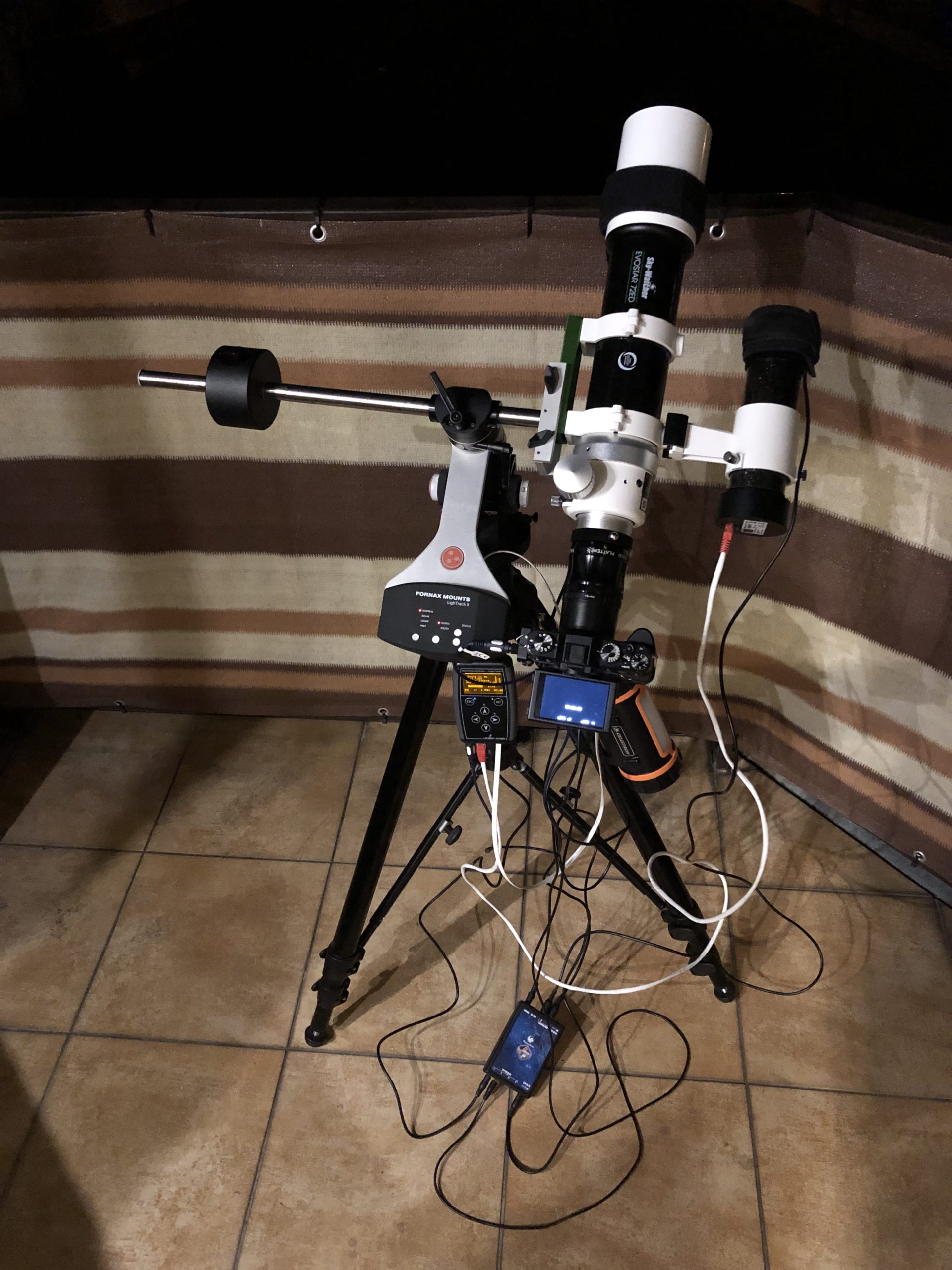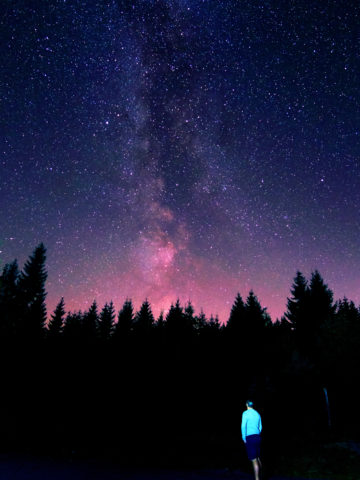The Rosette Nebula, also known as NGC 2237 or Caldwell 49, is a vast spherical H II region in the Monoceros constellation. What does it mean for an astrophotographer? It's a fantastic astrophotography target for DSLR and small telescope (or telephoto lens) owners! If you want to capture one of the visually most beautiful deep-sky astrophotography targets, this guide is for you.
Are you looking for more exciting astrophotography targets for beginners? Check out my free PDF eBook: 10 Easy Astrophotography Targets for Beginners. It's free and instantly downloadable.

Jump to:
Rosette Nebula Facts
| Object | Rosette Nebula |
| Object type | Diffuse nebula and open cluster |
| Other names | NGC 2237, Caldwell 49 |
| Constellation | Monoceros |
| RA (right ascension) | 06h 33m 45s |
| DEC (declination) | +04° 59′ 54″ |
| Magnitude | 4.8 |
| Size | 80 × 60 arcmin |
How to find the Rosette Nebula on the Night Sky

The Rosette nebula is very easy to locate due to its proximity to the Orion constellation. They are both considered winter astrophotography targets, so prepare to shoot them from late November to early March - they are not readily available outside this time range.
So, how to locate the Rosette Nebula? First, find the Orion Nebula. Next, there should be an orange star near to it - it's Betelgeuse. The Orion Nebula, Betelgeuse, and Rosette Nebula form an imaginary triangle. Look for the Rosette at the left end (see the picture above).
If you are not familiar with the night sky, download the free planetary software Stellarium and play with it; it's a fantastic app for astrophotographers and night sky enthusiasts. I have a list of the best astronomy and astrophotography apps for iPhone and iPad owners for iOS.
Photographing the Rosette Nebula with a DSLR/Mirrorless Camera (One-Shoot Color OSC)
You don't need specialized astronomy equipment to capture the Rosette nebula. Any entry-level DSLR like Canon EOS Rebel SL2 will do the job. And that feeling when you see the emerging nebula on your LCD screen for the first time is once in a lifetime moment (the next wow-moment is when you process all the data and see the final image).
More important than a camera is a telescope. Rosette is more significant than the Orion nebula, so you need a large field of view to capture it as a whole. I recommend a small APO telescope, like my Sky-Watcher Evostar 72ED. Explore Scientific ED80, William Optics Zenithstar series, and Meade 70mm Quadruplet APO are other suitable refractors to consider. Check out my article about the best astrophotography telescopes for beginners.
My Mobile Astrophotography Setup for Nebulae Photographing

At the time of writing this article, this is what my astrophotography setup consists of (and this is the gear I used to capture the Rosette Nebula picture at the top of this post):
| Camera | Fuji X-T20 |
| Telescope | Sky-Watcher Evostar 72ED |
| Equatorial mount | Fornax LighTrack II |
| Light pollution filter | Orion SkyGlow Imaging Filter |
| Autoguiding | Lacerta M-GEN II |
| Tripod | Manfrotto 475B Pro |

Processing the RGB data in PixInsight
My final RGB image of the Rosette Nebula at the top of this article is fully processed in PixInsight-only (OK, I added a watermark in Pixelmator, but it's entirely doable in PixInsight, too - just less convenient). The steps I took in the program were:
- Creating a master flat frame from 54 flat frames
- Calibration, registration, and integration of light frames
- Background extraction and neutralization
- Color calibration
- Linear noise reduction
- Histogram stretching
- Non-linear noise reduction
- Boosting contrast, sharpness, and saturation
- Reducing star sizes







Comments
No Comments